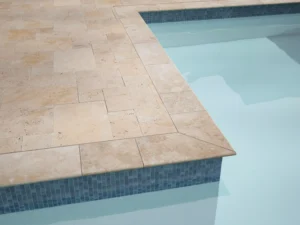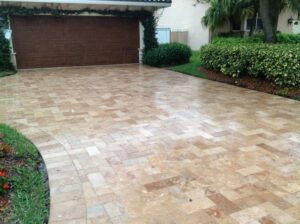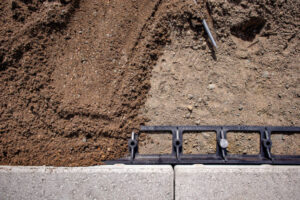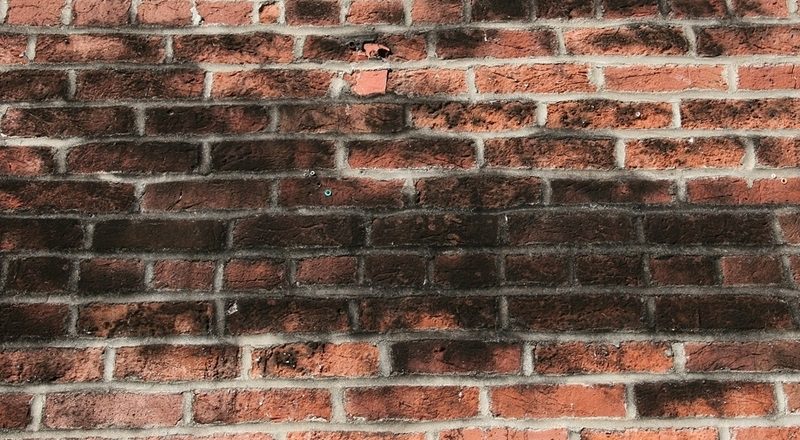
If you’ve been around bricks for a while, you may have noticed some of them start to develop black spots as time goes by. Why does this happen and what can you do to fix it and prevent it?
Bricks are one of the oldest construction materials known to man. The use of bricks in construction dates back to 7000 BC in Ancient Egypt, where they left a combination of straw and clay drying in the sun to form a rudimentary form of brick.
Much later, fire bricks were invented, allowing them to be produced even without the help of the sun. Bricks then started to become popular in colder climates.
In modern home design, bricks are still a staple, and for good reason. They are a cheap material that pays it back in resistance and versatility. Few things can compromise a good brick installation.
But yet, some things can. A good sign is a strange black stain starting to develop, sometimes covering a large area of an exterior wall. So what exactly are those stains and how to get rid of them for good?
Jump to:
Why do Bricks Turn Black?
Let us start by saying that bricks do not “turn black”. That is not supposed to happen. This black spot is developing probably due to one of these three things: excess moisture, dirt, or mold.
Bricks are a completely natural material. Nothing more than clay heated up to high temperatures, creating a sturdy material.
Of course, technology has developed and bricks nowadays are produced with high standards of industry regulations, but the process is still surprisingly simple.
Being so natural, bricks can easily retain water and start to develop mold, moss, and even algae. This can be counteracted if your bricks are sealed, but if they are not, they become a perfect place for these biological forms to grow.
So one of the main enemies of brick installation is poor drainage. With excess humidity around, bricks will start to develop these black spots. One of the first things to do is to check if there are no drainage problems or any pipes leaking nearby.
How to Fix the Problem?
Let’s talk about each possibility separately, starting with the simples one.
Dirt
That’s right, sometimes your bricks are just dirty. In time they can accumulate dust and pollution from the environment. A simple brushing job with the help of a cleaning product can do the trick.
However, if the dirt is proving to be resistant, maybe you’ll need the help of a pressure washer or a cleaning product specialized for bricks.
Excess Moisture
Like we talked about previously, excess moisture can be a complicated problem to identify and deal with. Check the area around the bricks for any drainage problems or leaking pipes.
In some extreme cases, you might need to call the help of a specialized hardscape contractor or a plumber.
Mold
Think of mold as a combination of both previous problems. While they can easily be cleaned off, basically using the same methods you would with dirt, they start to grow precisely because of the excess moisture accumulated in the bricks.
We will tell you the steps to get rid of mold in the next section, but to prevent them from ever coming back it is important that you do that drainage-leakage check and fix the problem on its core.
Getting Rid of Mold and Black Stains
Sometimes you will have to do a special kind of cleaning to get rid of mold. For this cleaning, you’re going to simply need oxygen bleach and warm water.
First, move away or cover any plants around the area where you’re going to apply the solution. Bleach is a very nocive material for any biological life, that’s precisely why it works so well against mold.
Mix a solution of 1/2 cup of bleach on a 1-gallon bucket of warm water. Stir it well until it is completely dissolved.
With the help of working gloves and a sponge, pour the solution on the mold, leaving it as damp as possible.
Slightly scrub the bricks with a stiff-bristled brush, just enough to seep in the bleach into the brick. Let the solution act for about 30 minutes.
You can repeat the process as many times as necessary and, after everything is done, rinse the area with a garden hose.
By following these steps you will easily get rid of any mold, algae, and moss on your brick pavers. However, beneath the mold, you may find stained bricks. In that case, there’s another step you can take.
In this step, you will be working with muriatic acid to get rid of any leftover dark spots left on the bricks.
Fill a bucket with water and slowly pour the muriatic acid into it, on a proportion of 1 part acid to 15 parts water. Attention! Never add water into acid, always put the water first and then the acid second.
Simply apply the solution with the help of a spray bottle and let it work for 10 to 15 minutes. After that, rinse the area with water.
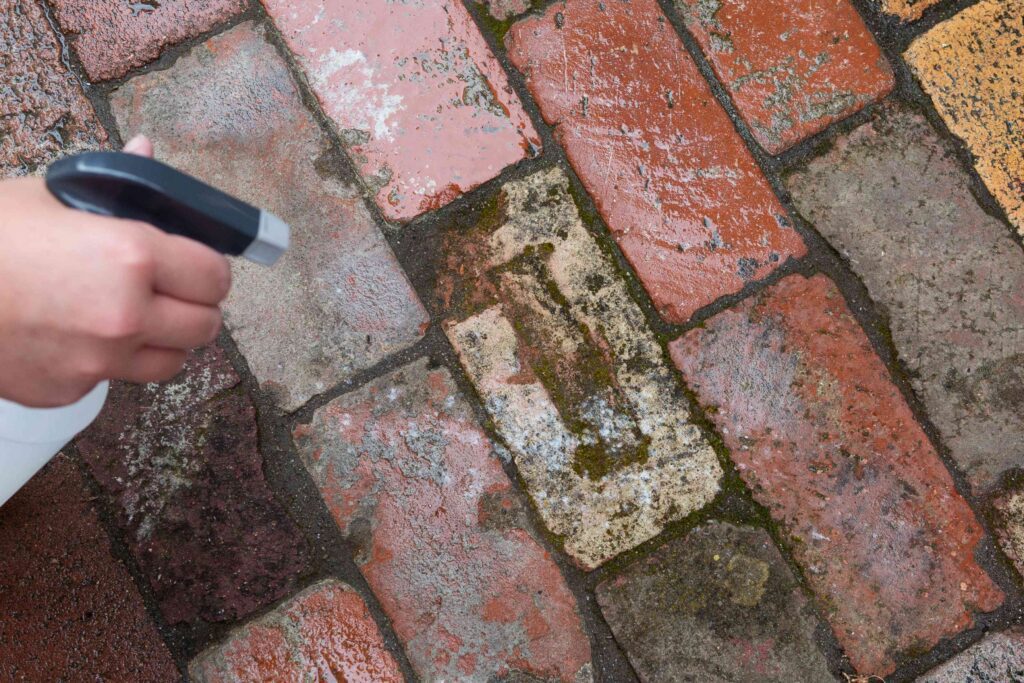
Professional Help to Fix Black Bricks
As easy as it is to do this cleaning process yourself, sometimes the situation might ask for a more qualified set of hands to help you, both in identifying the problem and point you in the right direction to solve it as to help you with the cleaning and maintenance.
Hiring professionals is always the best course of action to make sure nothing is left to chance. Here as JS Brick, we have the best professionals in the installation and maintenance of pavers.
For years we have been serving the Sarasota region with top-quality work. Give us a call any time at +1 941 586 9140 or reach us through our email at [email protected]. We’ll be happy to hear from you and help you with every paver and brick need you might have.

